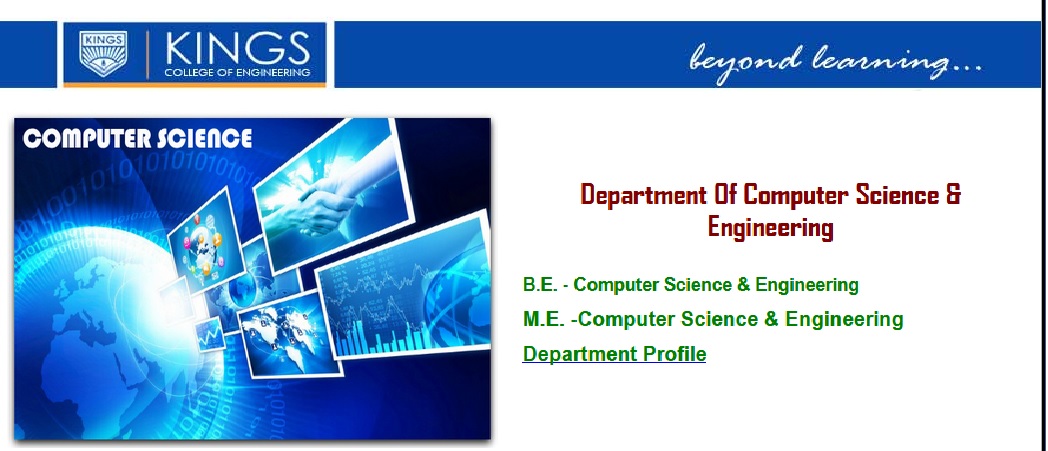CS1451 Network Protocols Question Bank : kings.ac.in
Name of the College : Kings College Of Engineering
Department : Computer Science & Engineering
Subject : Network Protocols
Website : kings.ac.in
Document Type : Question Bank
Download Model/Sample Question Paper : https://www.pdfquestion.in/uploads/ki…3-CS1451NP.pdf
Kings Network Protocols Question Paper
Unit-1
Frame Relay and ISDN
Part- A : (2 marks)
1. Define frame relay.
2. What are advantage and disadvantage of frame relay?
3. Lists the applications of frame relay.
Related : Kings College Of Engineering CS1354 Graphics & Multimedia Question Bank : www.pdfquestion.in/290.html
4. What are the two planes in frame relay protocol architecture?
5. What are the stages involved in Data transfer data transfer?
6. How many messages are need to establish a connection in frame relay?
7. Define ISDN.
8. List out the some ISDN Services.
9. Define digital pipe.
10. What are the two principal standards for bit pipe?
11. What are the Objectives of ISDN?
12. What are the four reference points defined by CCITT?
13. Which of the three channels are used to construct the access link?
14. How many connections can be set over B channel?
15 Which of the three formats are used as a common for all messages?
16. Write the two services of LAPD?
17. Draw the LAPF.

Part-B : (16 marks)
1. a. Draw and Explain in detail about Frame Relay Protocol Architecture. (10)
b. Difference between frame relay and packet switching network. (6)
2. a. Discuss in detail about the call control alternatives. (8)
b. Explain in detail about the two types of logical connections. (8)
3. a. Comparison of X.25 and frame relay protocol stacks. (6)
b. Explain in detail about user data transfer in frame relay. (10)
4. a. List and explain the objectives of ISDN. (8)
b. Draw and explain the block diagram of ISDN functions. (8)
5. Explain in detail about the different types of ISDN channels. (16)
6. Draw and explain the ISDN protocols. (16)
Unit-2
ATM & BISDN
Part-A : (2 marks)
1. Define Asynchronous transmission.
2. Define Asynchronous transfer mode (ATM)
3. Define ATM adaptation layer (AAL).
4. What is meant by VCC?
5. Define Virtual Path Connection.
6. What are the advantages of Virtual path?
7. List out the characteristics of Virtual Channel.
8. Define ATM cells.
9. What are Advantages of ATM cells?
10. What is meant by CLP?
11. List out the AAL Services.
12. Define convergence sub layer.
13. Why segmentation and reassembly sub layer is used?
14. Define B-ISDN.
15. What is meant by Management Plane?
16. Define VPI.
17. Define error-protection.
Part-B : (16 marks)
1. a. Draw and explain the architecture of ATM protocol. (8)
b. Discuss in detail about ATM logical connections. (8)
2. Draw and explain the ATM cell format. (16)
3. Explain in detail about the following.
a. Cell based physical layer with state transition diagram (8)
b. SDH Based physical layer. (8)
4. a. Discuss in detail about different types of services provided by AAL. (8)
b. Some of the congestion-control schemes are inadequate for ATM Networks.Why? (8)
5. Discuss in detail about the different type of traffic control functions. (16)
6. Draw and explain the functional architecture of B-ISDN. (16)
Unit-3
Security Protocols :
Part-A : (2 marks)
1. Define Encryption
2. Specify the components of encryption algorithm
3. Define confidentiality and authentication Confidentiality.
4. Define Authentication.
5. Define cryptography.
6. What is an elliptic curve?
7. What is message authentication?
8. Define the classes of message authentication function.
9. What are the different types of web security threats?
10. List and briefly define the principal categories of SET participants.
11. What is meant by SSL?
12. Draw the protocol stack for SSL.
13. What is meant by Change Ciper Spec Protocol?
14. What is the use of Handshake protocol?
15. What is meant by Secure Electronic Transaction?
16. What is a dual signature and what is its purpose?
17. What steps are involved in the SSL Record Protocol transmission?
18. What services are provided by the SSL Record Protocol?
19. What protocols comprise SSL?
Part-B :(16 marks)
1. Explain simplified DES with example. (16)
2. Explain Data Encryption Standard (DES) in detail. (16)
3. Explain RSA algorithm in detail with an example (16)
4. Briefly explain the idea behind Elliptic Curve Cryptosystem. (16)
5. Explain in detail the operation of Secure Socket Layer in detail. (16)
6. Explain Secure Electronic transaction with neat diagram. (16)